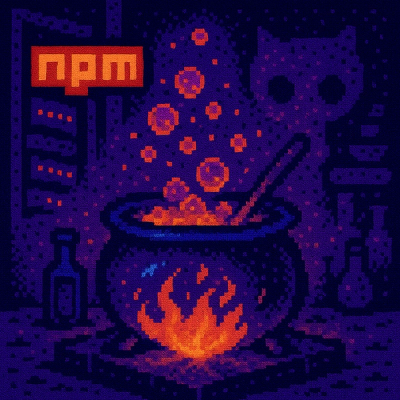
Research
/Security News
9 Malicious NuGet Packages Deliver Time-Delayed Destructive Payloads
Socket researchers discovered nine malicious NuGet packages that use time-delayed payloads to crash applications and corrupt industrial control systems.
traveltimepy
Advanced tools
The TravelTime Python SDK provides a simple and efficient way to access the TravelTime API, enabling you to calculate travel times and distances, generate isochrones, and perform location-based queries using real-world transportation data.
To check your Python version:
python --version
Install the TravelTime Python SDK using pip:
pip install traveltimepy
For protocol buffer (protobuf) support (required for TimeFilterFastProto endpoints):
pip install 'traveltimepy[proto]'
Get your API credentials from the TravelTime Developer Portal.
from datetime import datetime
from traveltimepy import Client
from traveltimepy.requests.common import Location, Coordinates, Property
from traveltimepy.requests.time_filter import TimeFilterDepartureSearch
from traveltimepy.requests.transportation import PublicTransport
from traveltimepy.errors import TravelTimeApiError
# Define locations
locations = [
Location(id="London center", coords=Coordinates(lat=51.508930, lng=-0.131387)),
Location(id="Hyde Park", coords=Coordinates(lat=51.508824, lng=-0.167093)),
Location(id="ZSL London Zoo", coords=Coordinates(lat=51.536067, lng=-0.153596))
]
# Option 1: Standard usage (manual session management)
client = Client(app_id="YOUR_APP_ID", api_key="YOUR_API_KEY")
try:
response = client.time_filter(
locations=locations,
departure_searches=[
TimeFilterDepartureSearch(
id="London center",
departure_location_id="London center",
arrival_location_ids=["Hyde Park", "ZSL London Zoo"],
departure_time=datetime.now(),
transportation=PublicTransport(),
travel_time=1800, # 30 minutes
properties=[Property.TRAVEL_TIME]
)
],
arrival_searches=[]
)
print(f"Found {len(response.results)} results")
for result in response.results:
print(f"Search ID: {result.search_id}")
except TravelTimeApiError as e:
print(e)
finally:
client.close() # Manually close session
# Option 2: Context manager (automatic session cleanup)
with Client(app_id="YOUR_APP_ID", api_key="YOUR_API_KEY") as client:
try:
response = client.time_filter(
locations=locations,
departure_searches=[
TimeFilterDepartureSearch(
id="London center",
departure_location_id="London center",
arrival_location_ids=["Hyde Park", "ZSL London Zoo"],
departure_time=datetime.now(),
transportation=PublicTransport(),
travel_time=1800,
properties=[Property.TRAVEL_TIME]
)
],
arrival_searches=[]
)
print(f"Found {len(response.results)} results")
for result in response.results:
print(f"Search ID: {result.search_id}")
except TravelTimeApiError as e:
print(e)
# Session automatically closed when exiting 'with' block
import asyncio
from datetime import datetime
from traveltimepy import AsyncClient
from traveltimepy.requests.common import Location, Coordinates
from traveltimepy.requests.time_filter import TimeFilterDepartureSearch
from traveltimepy.requests.transportation import PublicTransport
from traveltimepy.errors import TravelTimeApiError
locations = [
Location(id="London center", coords=Coordinates(lat=51.508930, lng=-0.131387)),
Location(id="Hyde Park", coords=Coordinates(lat=51.508824, lng=-0.167093)),
Location(id="ZSL London Zoo", coords=Coordinates(lat=51.536067, lng=-0.153596))
]
# Option 1: Standard async usage (manual session management)
async def main():
client = AsyncClient(app_id="YOUR_APP_ID", api_key="YOUR_API_KEY")
try:
response = await client.time_filter(
locations=locations,
departure_searches=[
TimeFilterDepartureSearch(
id="London center",
departure_location_id="London center",
arrival_location_ids=["Hyde Park", "ZSL London Zoo"],
departure_time=datetime.now(),
transportation=PublicTransport(),
travel_time=1800
)
],
arrival_searches=[]
)
print(f"Found {len(response.results)} results")
for result in response.results:
print(f"Search ID: {result.search_id}")
except TravelTimeApiError as e:
print(e)
finally:
await client.close() # Manually close session
# Option 2: Async context manager (automatic session cleanup)
async def main_with_context():
async with AsyncClient(app_id="YOUR_APP_ID", api_key="YOUR_API_KEY") as client:
try:
response = await client.time_filter(
locations=locations,
departure_searches=[
TimeFilterDepartureSearch(
id="London center",
departure_location_id="London center",
arrival_location_ids=["Hyde Park", "ZSL London Zoo"],
departure_time=datetime.now(),
transportation=PublicTransport(),
travel_time=1800
)
],
arrival_searches=[]
)
print(f"Found {len(response.results)} results")
for result in response.results:
print(f"Search ID: {result.search_id}")
except TravelTimeApiError as e:
print(e)
# Session automatically closed when exiting 'async with' block
# Run either version
asyncio.run(main())
# or
asyncio.run(main_with_context())
The SDK provides both synchronous (Client) and asynchronous (AsyncClient) versions of all methods:
time_filter() - Calculate travel times between locationstime_filter_fast() - High-performance version for large datasetstime_filter_proto() - Ultra-fast protocol buffer implementation (requires pip install 'traveltimepy[proto]')time_map() - Generate travel time polygonstime_map_geojson() - GeoJSON format isochronestime_map_wkt() - WKT format isochronestime_map_fast() - High-performance isochronestime_map_fast_geojson() - Fast GeoJSON isochronestime_map_fast_wkt() - Fast WKT isochronesroutes() - Calculate detailed routes between locationsgeocoding() - Convert addresses to coordinatesreverse_geocoding() - Convert coordinates to addressesh3() - H3 hexagon analysish3_fast() - Fast H3 analysisgeohash() - Geohash analysisgeohash_fast() - Fast geohash analysispostcodes() - UK postcode analysispostcode_districts() - UK postcode district analysispostcode_sectors() - UK postcode sector analysisdistance_map() - Distance-based catchment areasmap_info() - Get supported countries and featuressupported_locations() - Check location supportThe SDK supports various configuration options:
from traveltimepy import Client, AsyncClient
# Synchronous client
client = Client(
app_id="YOUR_APP_ID",
api_key="YOUR_API_KEY",
timeout=300, # Request timeout in seconds
retry_attempts=3, # Number of retry attempts for 5xx errors
max_rpm=60, # Maximum requests per minute
)
# Asynchronous client
async_client = AsyncClient(
app_id="YOUR_APP_ID",
api_key="YOUR_API_KEY",
timeout=300,
retry_attempts=3,
max_rpm=60
)
The SDK automatically handles both rate limiting and server error retries:
# Retries are built-in - no additional code needed
client = Client(app_id="YOUR_APP_ID", api_key="YOUR_API_KEY")
response = client.time_filter(
locations=locations,
departure_searches=searches
) # Automatically retries on 5xx errors
You can configure the number of retry attempts:
# Custom retry attempts
client = Client(
app_id="YOUR_APP_ID",
api_key="YOUR_API_KEY",
retry_attempts=5 # Will retry up to 5 times on 5xx errors
)
# Disable retries completely
client = Client(
app_id="YOUR_APP_ID",
api_key="YOUR_API_KEY",
retry_attempts=0 # No retries, fail immediately
)
The examples/ directory contains practical examples.
See examples/README.md for setup instructions and detailed descriptions.
*_fast() methods for high-volume use casestime_filter_proto() for maximum performance with large datasets (install with pip install 'traveltimepy[proto]')For comprehensive documentation, including detailed parameter references and advanced usage examples, visit:
If you have questions or need help:
This project is licensed under the MIT License - see the LICENSE file for details.
FAQs
Python Interface to Travel Time.
We found that traveltimepy demonstrated a healthy version release cadence and project activity because the last version was released less than a year ago. It has 3 open source maintainers collaborating on the project.
Did you know?

Socket for GitHub automatically highlights issues in each pull request and monitors the health of all your open source dependencies. Discover the contents of your packages and block harmful activity before you install or update your dependencies.

Research
/Security News
Socket researchers discovered nine malicious NuGet packages that use time-delayed payloads to crash applications and corrupt industrial control systems.

Security News
Socket CTO Ahmad Nassri discusses why supply chain attacks now target developer machines and what AI means for the future of enterprise security.

Security News
Learn the essential steps every developer should take to stay secure on npm and reduce exposure to supply chain attacks.